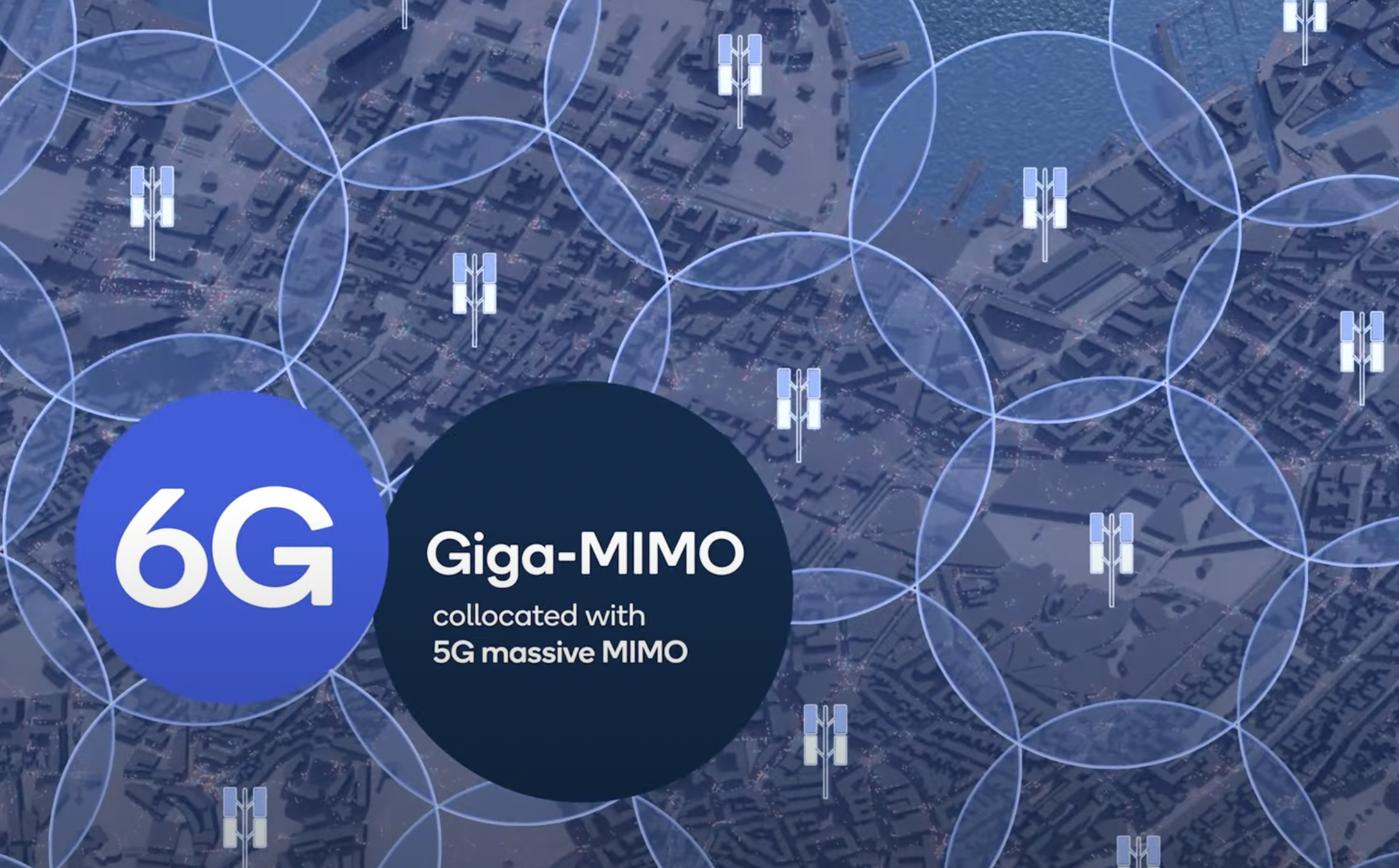The evolution from massive MIMO to Giga-MIMO will facilitate fast, cost-effective 6G deployment
Global consensus around 7.1 GHz to 8.4 GHz as a prime 6G candidate band, along with broader interest in the upper mid-band (7 GHz to 16 GHz) for future mobile broadband services, is coalescing. And to ensure that wide-area coverage using these bands can be quickly and cost-effectively deployed, Qualcomm is developing end-to-end Giga-MIMO systems that massively up the number of antenna elements as compared to massive MIMO systems, while maintaining a similar footprint to the 5G predecessor.
The high-level idea here is that the upper mid-band will be used as the 6G coverage layer; compare this to mid-band (3.5 GHz) spectrum serving as the coverage layer for 5G. Qualcomm’s prototype Giga-MIMO system supports mobile communications in the 13 GHz band with 4,096 antenna elements and 256 digital chains in a form factor comparable to 5G base stations. The Giga-MIMO prototype is currently being tested in lab facilities, and will soon be used in over-the-air testing at the company’s California headquarters. The 16x increase in antenna elements as compared to many massive MIMO systems brings with it a significant beamforming gain with the same total conducted base station power. This means it will be possible to co-site 6G Giga-MIMO with 5G massive MIMO to achieve similar wide-area coverage.
Qualcomm’s Tingfang Ji, vice president of engineering, explained by comparing 3.5 GHz to 7 GHz for wide-area coverage. 7 GHz has half the wavelength of 3.5 GHz which does come with a propagation loss, but means antennas can be half the size. With more antennas in an array, you can achieve an increase dB and beamforming that can not only offset propagation loss but increase coverage. “People typically think that the higher the frequency, the harder it is to actually get wide-area coverage. But one thing that’s interesting is that as Gs progress, we are getting better and better at making these massive MIMO arrays and Giga-MIMO arrays…As long as you can integrate more and more antennas, higher frequency is not a problem.”
Ji said Qualcomm has been working on Giga-MIMO for about three years, and has successfully moved from 100s of antenna elements and 10s of digital chains with massive MIMO to thousands of antenna elements and 100s of digital chains with Giga-MIMO. “This year” at Mobile World Congress “we are bringing the hardware…to show people with the same form factor we could actually have the same coverage.”
Referencing Qualcomm’s side-by-side testing of Giga-MIMO and massive MIMO, Ji said the next step is to move to over-the-air testing with an upper mid-band compatible reference device for a “comprehensive comparison.”
Looking at the bigger, longer-term vision of 6G and attendant spectrum needs, Ji said upper mid-band will boost overall capacity for wide-area coverage, but mmWave will still be the “workhorse” for driving capacity in hotspots. At the same time, sub-THz frequencies could be used for things like sensing, fixed backhaul and data center applications. “We have the ambition to not only allow operators to deploy a new nationwide network to enable new services, but it also will give them incentive to upgrade their existing services,” he said. While maintaining backwards compatibility with existing 5G infrastructure and services, with 6G, “we’ll also significantly increase operational efficiency of the entire network…Holistically speaking, we need all the spectrum assets to give us a 6G experience, enable the 6G service, at a cost that is much lower than 5G.”
With the technology piece coming together, and a “cautiously optimistic” view of spectrum availability per Qualcomm’s vice president of spectrum strategy, Ji also highlighted that operators need to think about 6G use cases and business cases to ensure necessary alignment for commercialization. “Timing is everything,” he said. “Everything needs to fall into place at the same time.”
For more on Qualcomm’s advanced wireless R&D, read the following:
- Qualcomm SVP talks wireless R&D philosophy, priorities
- Enabling boundless XR with dynamic distributed compute
- Enhancing vehicular safety and experience with cloud/connectivity
- How can operators benefit from digital twin networks?
- Access to more spectrum means more economic and national security
- Qualcomm focused on making 5G mmWave more cost effective

